New simulations find that to form a moon with a similar size ratio to our own system, certain types of planets are needed. And that type of moon-planet system could then be beneficial to the rise of life on the planet. Plus, a Starlink launch, puffy planets, and training astronauts underwater for spacewalks.
Podcast
Show Notes
Star eats star and now looks young
- Georgia State press release
- “The Transformative Journey of HD 93521,” Douglas R. Gies, Katherine Shepard, Peter Wysocki, and Robert Klement, 2022 January 31, The Astronomical Journal
Magnetic fields drive black hole flickers
- Simons Foundation press release
- “Black Hole Flares: Ejection of Accreted Magnetic Flux through 3D Plasmoid-mediated Reconnection,” B. Ripperda et al., 2022 January 14, The Astrophysical Journal Letters
What’s Up correction: Conjunction February 7
- Lunar Perigee and Apogee (timeanddate)
Moons beneficial to life beyond Earth
- University of Rochester press release
- “Large planets may not form fractionally large moons,” Miki Nakajima, Hidenori Genda, Erik Asphaug and Shigeru Ida, 2022 February 1, Nature Communications
Filling in the planetary gap
- Caltech press release
- Hubble press release
- Keck Observatory press release
- NASA Goddard press release
- “Escaping Helium from TOI 560.01, a Young Mini-Neptune,” Michael Zhang et al., 2022 January 17, The Astronomical Journal
- “Detection of Ongoing Mass Loss from HD 63433c, a Young Mini-Neptune,” Michael Zhang et al., 2022 January 17, The Astronomical Journal
Third Falcon 9 in seven days is a Starlink
- Starlink mission page (SpaceX)
First Baharani satellite
- International Space Station places UAE-Bahraini satellite Light-1 into orbit (The National News UAE)
NASA astronauts train in the dark for the moon
- NASA press release
Transcript
No lies, we’ve all been reading a lot of fantasy and horror fiction around here, and in today’s space news, we found the universe is actually filled with monsters.
And because we like to share, today we’re bringing you stories spanning from stars regaining their youth by eating the life force of other stars as well as news of stars pushing apart planetary atmospheres.
We also have launches, yeets, and cosmic yolos. Want to know more? Stick around and find out.
I’m Dr. Pamela Gay.
And I’m Beth Johnson.
And we’re here to put science in your brain, right here on the Daily Space.
As we enter day 705 of March 2020, it can feel like nothing is changing during this never-ending series of Groundhog Days, and for those of you acknowledging it is Feb 4, 2022, Punxsutawney Phil did see his shadow on Groundhog Day.
But anyway, while these work-from-home days all seem the same, some things are changing — like us. Kids are growing up, my gray hairs are multiplying, and day by day, moisturizer gets just that much more necessary. But what if we could find a way to hit rejuvenate, to go back to the most exciting days of our youth? Would you?
What if it required you to consume someone else’s life force?
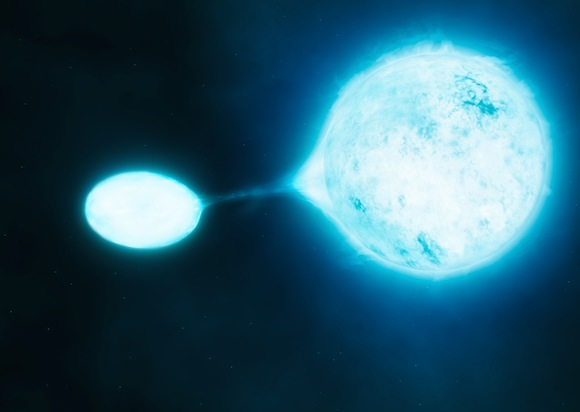
In a science article that reads like a vampire story, researchers found a massive hot star that looked like the kind of giant that should only live for five million years, but this star was located so far from any potential stellar nursery that no one could explain it. Moving at normal orbital rates, this object couldn’t have lived long enough to travel the 3,600 light-years between it and the disk of the Milky Way. In trying to figure out how this young-looking star got to the far-off location, researchers realized the star, HD93521, didn’t form as one massive star, but rather as two smaller stars that traveled and aged together as a binary star system.
Until they didn’t.
At some point, the stars merged together, with one star consuming the other and rolling back its clock to become young again.
HD93521 gave away its murderous past with its spin. Pretty much everything in the universe spins, but it takes a violent event or a merger of some sort to get something spinning fast, and HD93521 happens to be one of the fastest spinning regular stars in the galaxy.
And it looks like HD93521 may be a trendsetter. The steller pair IT Librae is also zipping out of the disk of the galaxy, and one of its two stars looks entirely too young to have been able to make this journey. A close look reveals that the smaller star is being robbed of its mass, allowing the growing companion to appear younger and younger as they journey.
This work appears in a new paper in The Astronomical Journal, is led by Douglas Gies, and it concludes with one final bit of horror science. It turns out that these merged stars can evolve into fast rotating black holes.
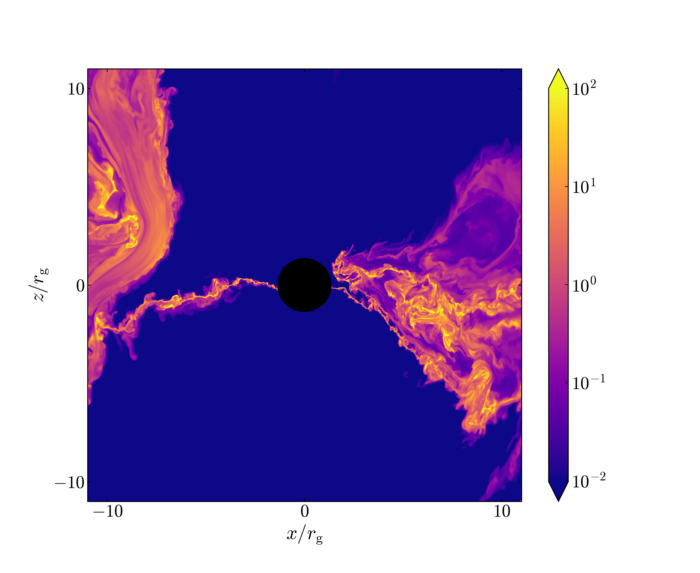
Black holes are hard to fully understand. Every time I learn more about them, I feel like I understand them less. The basic idea is simple: if the mass inside a volume gets high enough, the escape velocity becomes larger than the speed of light.
Earth is a people hole since its gravity prevents me from jumping off, but at its current size, light can fly away, no big deal. Now, if you mash the Earth’s mass down to about half an inch across, that much mass in that small space is totally going to be a black hole. While stuff can’t escape a black hole, forces like gravity can totally be felt across that event horizon, and calculating the tangled relationships between a black hole and any surrounding material requires understanding gravity, magnetic fields, and all of the relativistic versions of both.
From looking at black holes, we know cool stuff is happening. Some systems flare up on a regular basis, including the supermassive black hole in our own galaxy, which flares daily in high-energy light. We just didn’t know why. Until now.
In new research published in The Astrophysical Journal and led by Bart Ripperda, researchers show how magnetic field lines can pile up, tangle, and ultimately reconnect with a release of energy on a regular basis. As described in the release: …new simulations show that interactions between the magnetic field and material falling into the black hole’s maw cause the field to compress, flatten, break and reconnect. That process ultimately uses magnetic energy to slingshot hot plasma particles at near light speed into the black hole or out into space.
And when those particles fly out, they trigger those flares we see.
This research was only possible thanks to the combined power of three supercomputers that increased model resolution by a factor of 5,000. According to Ripperda: Without the high resolution of our simulations, you couldn’t capture the subdynamics and the substructures. In the low-resolution models, reconnection doesn’t occur, so there’s no mechanism that could accelerate particles.
Sometimes, the answer actually is to enhance, enhance, enhance.
And sometimes the answer is just to proofread better.
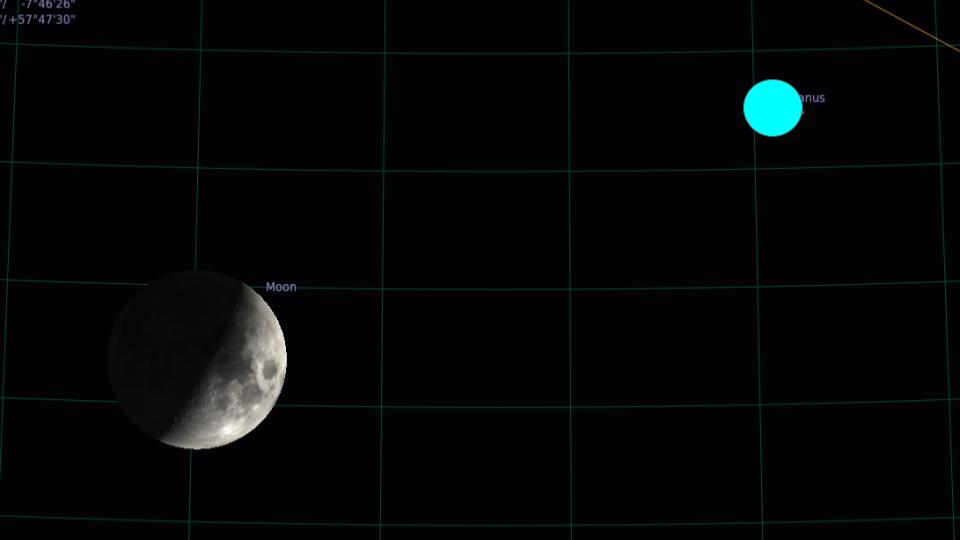
In our What’s Up segment this week, we talked about the conjunction between the Moon and Uranus. This event is occurring on Monday, February 7. If you head out just after sunset, you should be able to find the Moon and about two degrees (two finger-widths) away from it will be the very faint dot that is Uranus. You’ll need to use a small to a medium telescope to really be able to make out the blueish-green dot to the right of the Moon.
The eleventh, the date we falsely gave, snuck in from a story we didn’t cover. The Moon is going to be at apogee – its farthest point from Earth – at 03:00 UTC on February 11, which is in the mid-to-late-evening of the tenth, depending on what timezone you’re in. At that time, the Moon will be 404,897 kilometers away from the Earth, which works out to 1.35 light seconds.
We’re sorry for the date confusion, but this correction let us get you more science.
From stellar vampires, we now turn to life, evolution, and the death of atmospheres. It’s just that kind of a day.

In our last episode, I talked about how researchers think the rise of oxygen levels here on Earth helped life come about and how we could use that rise as a potential biosignature on exoplanets. I also mentioned that there are possibly a lot of ingredients that went into allowing life to develop here, and we’re not sure which ones are necessary because of our sample size of one system with life.
And our Moon is unique in our own solar system. Its radius is over a quarter the size of Earth’s radius, which is a larger ratio than other moons and their planets. Our Moon stabilizes Earth’s spin axis, which could have helped create a great environment for the development and evolution of life. When looking for that as yet unfound Earth 2.0, perhaps we need to also find the Moon 2.0 to go with it.
To understand how necessary that aspect of the search may be, Miki Nakajima led a study of moon formations, which was published in Nature Communications, and concluded that only certain types of planets can form a moon similar in size ratio to the Earth-Moon system. Nakajima explains: By understanding moon formations, we have a better constraint on what to look for when searching for Earth-like planets. We expect that exomoons [moons orbiting planets outside our solar system] should be everywhere, but so far we haven’t confirmed any. Our constraints will be helpful for future observations.
Our Moon formed when a Mars-sized protoplanet struck the proto-Earth way back at the beginning of the solar system. This collision formed a partially vaporized disk of material around that proto-Earth, and that material eventually collected together and became the Moon as we know it. To understand how other systems might form in a similar fashion, the press release explains: Nakajima and her colleagues conducted impact simulations on the computer, with a number of hypothetical Earth-like rocky planets and icy planets of varying masses. They hoped to identify whether the simulated impacts would result in partially vaporized disks, like the disk that formed Earth’s moon.
And they discovered that rocky planets which are six times Earth’s mass and icy planets the mass of Earth will fully vaporize the disks in a collision, making the system incapable of forming a large enough moon. Nakajima concludes: We found that if the planet is too massive, these impacts produce completely vapor disks because impacts between massive planets are generally more energetic than those between small planets. As a result, we conclude that a completely vapor disk is not capable of forming fractionally large moons.
So a rocky Earth 2.0 needs to be smaller than six times the mass of Earth 1.0. That definitely narrows down the type of exoplanet we need to look for.
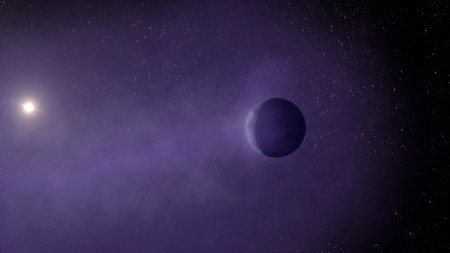
It’s great to narrow down what we need to be looking for as we search for Earth 2.0, but there’s a teeny, tiny problem. We have this gap in our planetary catalog between exoplanets about the size of Earth and planets 2-4 times the size, what we call mini-Neptunes. So if we’re looking for something less than six times the size of Earth, we might be scrounging for targets.
But two new papers published in The Astronomical Journal may have solved that planetary gap problem. Well, not solved so much as found out why it exists in the first place, which may not help in the search for Earth 2.0, and I really need to stop calling it that, but is still useful in helping to understand this whole planetary formation process that keeps confounding us.
The new studies involve mini-Neptune planets in two systems – TOI 560 and HD 63433. These systems are between 70 and 100 light-years away or so. An analysis of the atmospheric gas around the plants shows that the gas is, well, escaping from them. That could mean that these mini-Neptunes are becoming super-Earths.
Do you know what’s awesome? We’ve suspected this was the case for a few years now, and it’s great to get confirmation. As lead author and graduate student Michael Zhang notes: Most astronomers suspected that young, small mini-Neptunes must have evaporating atmospheres. But nobody had ever caught one in the process of doing so until now.
Except one of these planets is losing its gas toward its star, which was not expected.
There is a great possible explanation for this whole puffy planet to rocky world process in the press release: Mini-Neptunes are theorized to be cocooned by primordial atmospheres made of hydrogen and helium. The hydrogen and helium are left over from the formation of the central star, which is born out of clouds of gas. If a mini-Neptune is small enough and close enough to its star, stellar X-rays and ultraviolet radiation can strip away its primordial atmosphere over a period of hundreds of millions of years, scientists theorize. This would then leave behind a rocky super-Earth with a substantially smaller radius, which could, in theory, still retain a relatively thin atmosphere similar to that surrounding our own planet.
That’s not to say that there aren’t other possible explanations for the planetary gap, but these new discoveries strengthen the evidence for the transition hypothesis.
Meanwhile, back on Earth, rockets are still going up, satellites are going into orbit, and astronauts are still training to go into space. Erik is going to tell us all that is going on in the world of space exploration next.
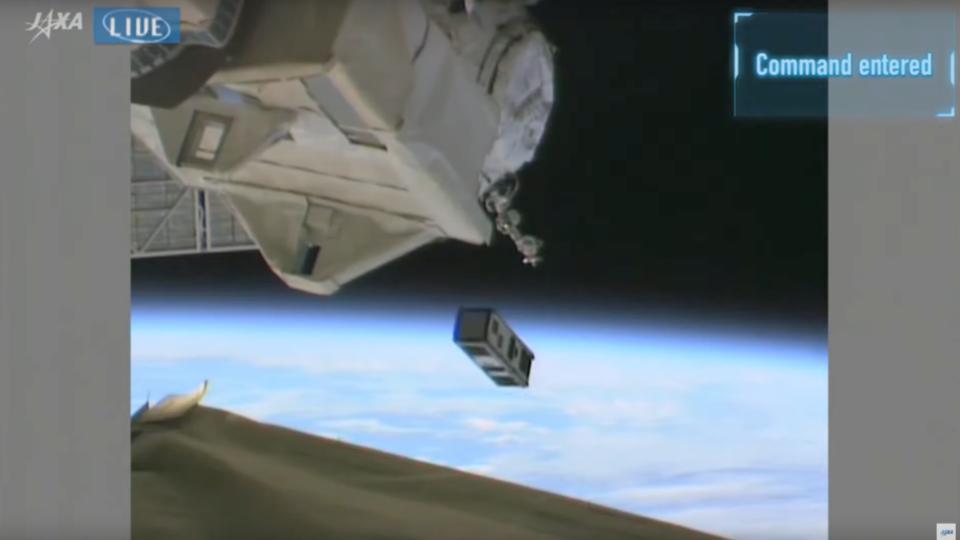
On February 3 at 18:13 UTC, the Starlink 4-7 mission launched atop Falcon 9 booster 1061 from LC-39A at the Kennedy Space Center in Florida, the third Falcon 9 launch in the last seven days. This was only the sixth flight for Booster 1061, which successfully landed on the drone ship A Shortfall of Gravitas stationed several hundred kilometers downrange. The Falcon 9 again took the southern launch corridor to take advantage of calmer waters for recovery as it headed towards its 53.2-degree inclination orbit. This launch set a record for fairing reuse, with one of them on its sixth flight and the other its fourth.
And now to another launch, that happened to be from something already in orbit. On February 3, the first satellite from Bahrain, a CubeSat called Light-1 was yeeted from the International Space Station (ISS) by the JEM Small Satellite Orbital Deployer attached to the Kibo module on the ISS. The purpose of Light-1, a three-unit CubeSat, is to measure Terrestrial Gamma-ray Flashes. These events are potentially hazardous to humans and machines.
Future lunar spacewalkers won’t have to worry about Terrestrial Gamma-ray Flashes, but they have a whole other set of concerns.
Engineers and trainers at NASA’s Johnson Space Center have been preparing NASA astronauts for the extravehicular activities, EVAs or spacewalks, that they will need to perform during the future Artemis lunar landings. I was drawn to this story after seeing this really cool photo while I was doomscrolling Twitter.

Basically, engineers want to know how easy it is to use the new spacesuit being developed for the missions and what tools the astronauts may need on the surface of the Moon. Astronauts have other methods of trying out things, but trying to move around in a spacesuit in low gravity and do tasks is a different matter. There’s nothing like the real thing, or as close to the real thing as we can get on Earth.
The EVA preparations have been going on since at least September 2020 and have consisted of building a simulated lunar surface at the bottom of a special pool known as the Neutral Buoyancy Laboratory. The latest phase of the training is practicing for an EVA at the lunar south pole where it is permanently shadowed. Artemis 4, which will land no earlier than 2024, will target this area.
This is different from the EVAs done during the Apollo missions, which were closer to the lunar equator and better lit. In order to simulate the lighting conditions at the lunar south pole, they turned off all the lights in the Neutral Buoyancy Laboratory.
I’m not sure I’d want to do an EVA in almost complete darkness.
This has been the Daily Space.
You can find more information on all our stories, including images, at DailySpace.org. As always, we’re here thanks to the donations of people like you. If you like our content, please consider joining our Patreon at Patreon.com/CosmoQuestX.
Credits
Written by Pamela Gay, Beth Johnson, and Erik Madaus
Hosted by Pamela Gay, Beth Johnson, and Erik Madaus
Audio and Video Editing by Ally Pelphrey
Content Editing by Beth Johnson
Intro and Outro music by Kevin MacLeod, https://incompetech.com/music/


 We record most shows live, on Twitch. Follow us today to get alerts when we go live.
We record most shows live, on Twitch. Follow us today to get alerts when we go live.